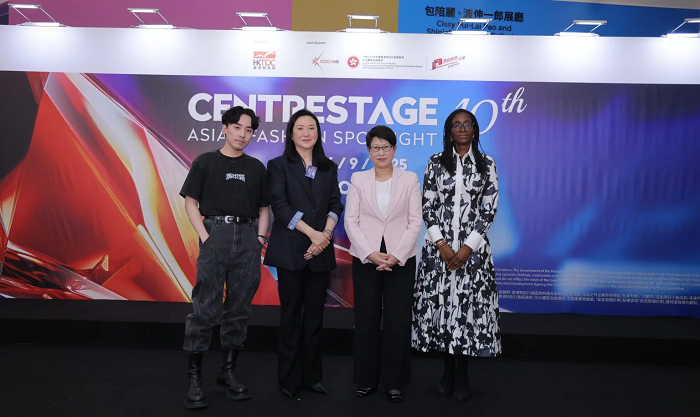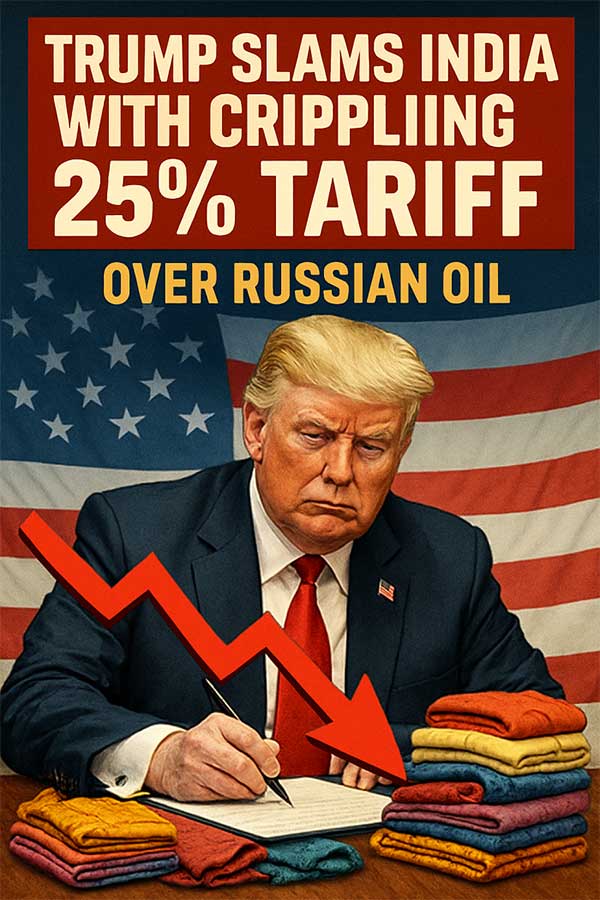FW
India's textile exports declined by 16.3 per cent to $34.4 billion in the fiscal year 2023-24 from $41 billion in fiscal year 2021-22.
Among the various segments within the textile sector, exports of cotton yarn, fabrics, made-ups, and handloom products increased to $740 million in 2023-24 over the previous year, due to a rise in the exports of cotton yarn, according to data from the NIRYAT portal of the Union Ministry of Commerce and Industry.
Exports to North America led at $11 billion, followed by Europe at $10 billion, and West Asia and North African countries at $4 billion.
Israr Ahmed, Vice President, Federation of Indian Export Organisations (FIEO), said, the exports were mainly affected by the impact of geopolitical tensions on the global economy.
The impact of the persisting Red Sea crisis resulted in escalating sea freight by about 100 per cent along with a substantial increase in air freights of up to 200 per cent. Constituting 42 per cent of combined textile exports, RMG exports declined by 10 per cent in FY24 compared to the previous year.
Mithileshwar Thakur, Secretary-General, Apparel Exports Promotion Council (AEPC), expressed optimism regarding a potential recovery. He cited recent improvements in the past few months and anticipated benefits from Free Trade Agreements (FTAs) signed between India, the UK, and the EU. Thakur also mentioned government initiatives such as the Production-Linked Incentive (PLI) Scheme and PM MITRA Park, aimed at enhancing production capabilities in the textile sector.
However, the textile hub of Tirupur experienced a notable decline in exports from $4 billion in FY22 to $3 billion in FY24. Raja M Shanmugam, Former President, Tiruppur Exporters Association, attributed this decline to reduced demand for value-added garments in the US and Europe. He emphasised, government support is necessary to prevent Micro, Small, and Medium Enterprises (MSMEs) from exiting the sector. He also proposed initiatives such as the Government Emergency Credit Line Guarantee Scheme and moratoriums on dues for six months.
Archroma, a pioneer in sustainable specialty chemicals, and Cotton Incorporated, a key player in cotton research and promotion, have extended their partnership for another eight years. The collaboration, initiated in 2016, aims to expedite the transition towards a more sustainable circular economy.
Originating from the United States, the world's third-largest cotton producer and foremost exporter, sustainable cotton fiber serves various industries, alongside byproducts like burs and stems. Recognizing the untapped potential of these byproducts, Cotton Incorporated approached Archroma to develop dyes derived from them.
Leveraging Archroma's century-long expertise in sulfur dye innovation, the research team utilized their EarthColors technology to produce Diresul Earth-Cotton from U.S. cotton byproducts. This innovative dye, an eco-friendly alternative to conventional oil-based dyes, enables brands to offer textiles in warm, natural hues, utilizing cotton for both fabric and dye production.
Mary Ankeny, Vice President of Product Development at Cotton Incorporated, emphasized the commitment to advancing circularity through innovative collaborations like this. Umberto De Vita, Market Segment Director for Denim at Archroma, echoed the sentiment, highlighting the partnership's role in propelling the textile industry towards sustainability.
The renewal of this collaboration underscores the pivotal role of synergy between industry leaders in driving sustainable innovation across the textile value chain.
The convergence of digitalization and sports is ushering in a new era of fitness and well-being, with wearables at the forefront of this transformative wave. Leading the charge is Karl Mayer, a pioneering wearables specialist, in collaboration with the DiMo - DigitalMotion project. This initiative, poised to reshape the landscape of fitness technology, aims to explore the intersection of digital innovation and human experience in physical activity.
Fuelled by burgeoning trends such as the fitness lifestyle surge, quantified self-movement, active aging, and the outdoor boom, the sports, health, and wellness sector is undergoing a profound metamorphosis. Central to this evolution are technological breakthroughs poised to redefine how individuals approach fitness and health maintenance.
The DiMo-Next project, building upon its successful inaugural round in 2023, embarks on a four-year journey to delve deeper into enhancing exercise experiences, boosting performance, and fostering sustainable lifestyles. With a focus on leveraging digital technologies, particularly advanced sensors, Karl Mayer is among the 26 industry and research partners committed to revolutionizing the textile industry's role in this paradigm shift.
Karl Mayer 's expertise in wearables, showcased through its Textile Circuit team, underscores its pivotal role in the project. By integrating cutting-edge motion and psychophysiological sensors into clothing, DiMo-Next aims to empower users with intuitive interaction concepts, driving motivation, performance, and overall well-being.
Franziska Guth, Product Developer for Textile Technology at Karl Mayer, emphasizes the imperative of next-generation wearables. As the project advances, the focus shifts from mere data acquisition to actively enhancing user experience, optimizing movement, and refining training sessions.
Excitement mounts as Karl Mayer prepares to unveil the fruits of its labor at Techtextil 2024 in Frankfurt. Positioned at the forefront of innovation, Karl Mayer invites industry enthusiasts to witness firsthand the future of wearable fitness technology, promising a transformative experience that transcends conventional boundaries.
Rieter's Annual General Meeting 2024 saw resounding approval from shareholders as they endorsed all proposals put forth by the Board of Directors. The meeting, attended by representatives constituting 68.7 per cent of the share capital, marked significant developments including the distribution of a CHF 3.00 per share dividend and pivotal changes in board leadership.
Thomas Oetterli's appointment as the new Chairman of the Board of Directors, succeeding Bernhard Jucker, stood out prominently. Jennifer Maag's inclusion as a new member of the board added further depth to Rieter's leadership team.
Key decisions included the formal acceptance of the Remuneration Report 2023 and future remuneration plans for the Board of Directors and the Group Executive Committee. Shareholders also greenlit amendments to the Articles of Association, underscoring their confidence in Rieter's strategic direction.
Furthermore, the re-election of existing board members and the addition of Daniel Grieder to the Remuneration Committee highlighted a commitment to continuity and expertise within governance structures.
Overall, Rieter's AGM reflected shareholder optimism, emphasizing stability and strategic evolution within the company's leadership and governance framework.
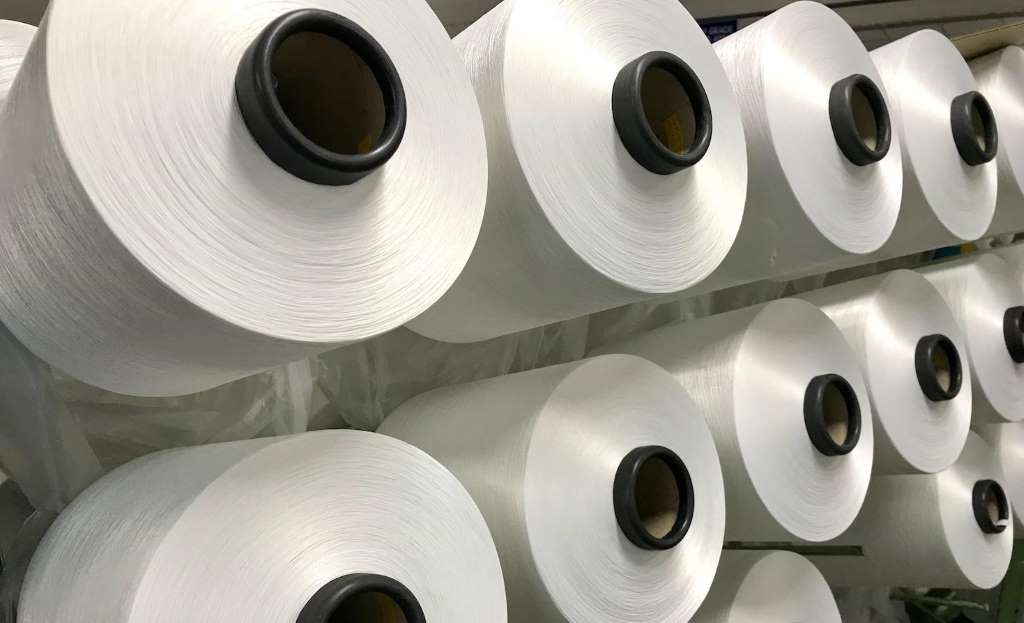
In a significant move Swedish fashion giant H&M has recently moved away from recycled polyester derived from plastic bottles and towards a ‘circular’ solution – recycling textiles from pre-worn clothing and offcuts. H&M's $600 million investment in Syre a startup specializing in textile-to-textile recycling, signals a potential decline in demand for recycled polyester from plastic bottles. This shift has significant implications for the recycled fiber market and the future of circular fashion.
Impact on recycled fiber market
On the production side, H&M’s approach aims to create a closed-loop system within the fashion industry. However, this move could impact companies like Unifi, whose Repreve material relies heavily on PET bottles. While recycled plastic bottles seemed eco-friendly, the process consumes energy and competes with bottle-to-bottle recycling. Textile-to-textile recycling potentially reduces waste and avoids competition with existing recycling streams.
However, overall demand for recycled polyester is expected to rise as consumers and brands increasingly prioritize sustainability. The demand for recycled polyester is driven by consumer and government regulations. H&M's move and similar initiatives by Zara, Puma, and Patagonia suggest a broader industry shift towards circular textile recycling. Meanwhile, governments like those in Europe are also pushing for increased textile recycling through regulations. Companies like Unifi are adapting by ramping up their textile recycling capacities.
As per Textile Exchange currently, 15 per cent of recycled fibers are polyester, with 99 per cent coming from PET bottles. Meanwhile H&M aims to source 50 per cent of its materials from recycled sources by 2030. And Unifi, a major recycled polyester producer, plans to convert the equivalent of 1.5 billion old T-shirts into new polyester yarn by 2030.
The future of circular fashion
Indeed, the textile-to-textile approach championed by H&M and others represents a more closed-loop system for polyester. This could significantly reduce waste and environmental impact compared to the traditional bottle-to-garment approach.
Meanwhile Syre's ambitious plan to open 12 commercial plants by 2026 indicates confidence in the scalability of textile-to-textile recycling. However, achieving large-scale adoption will require collaboration between brands, suppliers, and collection/recycling companies.
Challenges while navigating circularity
And, there are many challenges. One major challenge is that of microplastic pollution from synthetic fibers like polyester, regardless of their source. Continued research on reducing fiber shedding and developing filter technologies is crucial. Also, polyester remains a petroleum-based product. Efforts to develop bio-based alternatives or capture carbon emissions from production are needed for a truly sustainable solution. Then significant investments are needed to develop and scale up new textile-to-textile recycling technologies. Innovation in areas like enzyme-based recycling holds promise for a more sustainable future.
Looking ahead, the shift towards textile-to-textile recycling presents a significant opportunity for the fashion industry to become more sustainable. However, addressing microfiber pollution and the inherent limitations of polyester remain crucial challenges. Continued innovation, collaboration, and investment are essential to ensure a truly circular and environmentally conscious future for fashion.
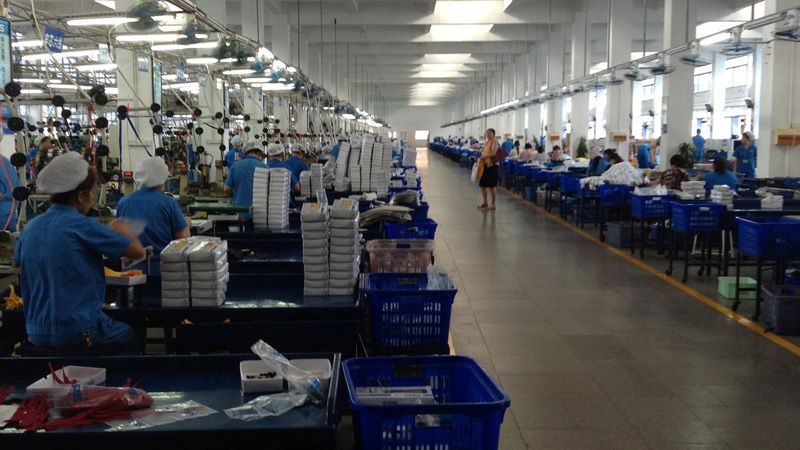
China's economic performance in the first quarter of 2024 surprised many exceeding expectations with a 5.3 per cent GDP growth. This increase was driven in large part by the robust performance of apparel and textile industry, a sector experiencing unexpected strength in both exports and domestic markets.
Textile and apparel lead the charge
Data is not yet available for the entire textile and apparel sector, but a bright light comes from combined textile and apparel exports reaching a robust $45.09 billion in the first two months of 2024, a significant 14.26 per cent increase compared to the same period in 2023. Both apparel and textiles saw impressive growth. Apparel exports reached $23.38 billion, a 13.1 per cent increase year-over-year, while textile exports hit $21.71 billion, reflecting a 15.5 per cent jump.
Domestic market remains subdued
While the export sector thrives, China's domestic market for apparel and textiles continues to face challenges. Overall retail sales growth fell short of expectations, climbing only 3.1 per cent in the first quarter as per National Bureau of Statistics. This sluggish domestic demand creates a situation where manufacturers are heavily reliant on exports for growth.
Growth triggers
|
Statistic |
Growth rate |
Time period |
source |
|
|
Textile & Apparel Exports |
14.26% |
Jan-Feb 2024 vs. Jan-Feb 2023 |
textilesinsights.in |
|
|
Apparel Exports |
13.10% |
Jan-Feb 2024 vs. Jan-Feb 2023 |
textilesinsights.in |
|
|
Textile Exports |
15.50% |
Jan-Feb 2024 vs. Jan-Feb 2023 |
textilesinsights.in |
|
|
Apparel Retail Sales (Nov-Dec) |
Over 25% |
2023 |
National Bureau of Statistics (China) |
Analysts attribute this unexpected export growth to several factors.
Resilient global demand: Despite global economic uncertainties, demand for Chinese apparel and textiles remains strong in international markets.
Shifting consumer preferences: A growing focus on value and affordability might be driving consumers towards Chinese-made garments.
Government support: The Chinese government's efforts to stimulate domestic consumption through initiatives like tax breaks and infrastructure spending could be contributing to the positive trend within the domestic market.
However, the positive performance in the apparel and textile sector stands in contrast to the broader Chinese economy, which is grappling with a sluggish consumer market and a slumping real estate sector. Analysts believe the government will need to implement additional measures to stimulate domestic spending and stabilize the property market to achieve its ambitious annual growth target of around 5 per cent.
The future path of China's apparel and textile industry hinges on several factors, including global trade dynamics, geopolitical tensions, and the effectiveness of government stimulus policies. Continued strong export performance can fuel further growth, but external factors like trade barriers pose potential risks. The industry's ability to navigate these challenges will be crucial in determining its long-term success.
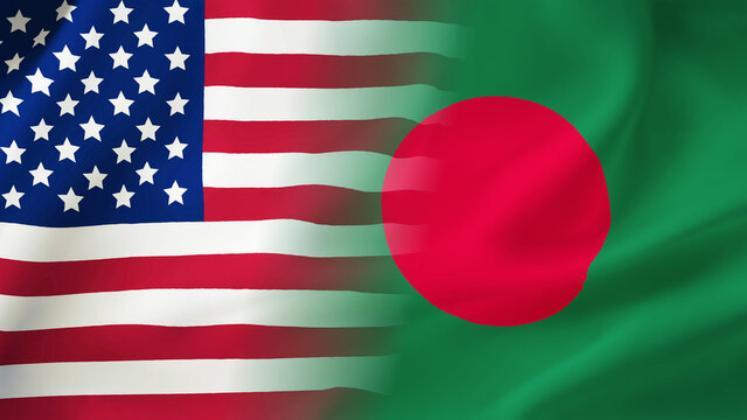
The US International Trade Commission (USITC) is considering raising tariffs on apparel imports from Bangladesh, India, Indonesia, Cambodia, and Pakistan. However, this proposal faces strong opposition from four major American trade bodies.
Import share of targeted countries
These five countries account for a significant portion of US apparel import.
|
Country |
Import share (%) |
|
Bangladesh |
9.3 |
|
India |
7.8 |
|
Indonesia |
5.2 |
|
Cambodia |
3.9 |
|
Pakistan |
2.8 |
|
Total |
29 |
These U.S. International Trade Commission (USTC) figures reflect the US imports 20 per cent of apparels from these five Asian countries. Assuming a hypothetical total US apparel import value of $100 billion, the targeted countries contribute:
|
Country |
Import value ($billion) |
|
Bangladesh |
9.3 |
|
India |
7.8 |
|
Indonesia |
5.2 |
|
Cambodia |
3.9 |
|
Pakistan |
2.8 |
|
Total |
29 |
Thus, based on the import share, around 29 per cent of US apparel imports would be impacted by the tariff increase on these five countries.
Tariff increase arguments for and against
Proponents of the tariff hike argue that a sudden price increase and surplus of garment imports from these five countries disrupt the US market. Also, this will help in protecting domestic apparel industry jobs.
However, the trade bodies argue, an increase will lead to higher costs for US consumers as the tariff hike will be passed on to them and prices will increase. Also, it will be disrupting established supply chains of these five countries, known for well-developed textile industries and could lead to global shortages. Moreover, the US already has high tariffs on apparel.
Indeed, the exact proposed tariff increase is not publicly available. The impact on global supply chain prices is difficult to predict. It does highlight, the complex issue of trade policy and its impact on consumers and businesses. It remains to be seen whether the USITC will follow through with the proposed tariff hike and what the ultimate impact will be.
Bangladesh has emerged as the country with the highest number of LEED-certified garment factories. The country currently has 215 LEED green factories, with 81platinum rated, 120 gold, 10 silver and four only green certified.
Of the top 100 green garment factories globally, 55 are located in Bangladesh, making the country the global champion in the green garment category.
The US Green Building Council (USGBC) recently awarded Fashion Makers Ltd with the green certification in Leadership in Energy and Environmental Design (LEED).
Located at Gargharia Masterbari at Sreepur, Fashion Makers received the green LEED certification in platinum category. Sixteen other countries all together have 45 top green garment factories, according to data from Bangladesh Garment Manufacturers and Exporters Association (BGMEA).
The countries with the second and third highest numbers of LEED-certified green garment factories are Pakistan (nine) and India (eight).
In a letter to Muhammad Aurangzeb, Finance Minister, the All Pakistan Textile Mills Association (APTMA) has urged the government to introduce new export-oriented policies to make the textile industry more competitive globally. One of the demands of the association is to reduce energy tariffs and tax rates.
In the letter, APTMA emphasises on the need for a fundamental reform to foster an export-centric culture across all sectors of the economy. The association opines, the government should introduce a new program to foster an export-oriented environment. This will help Pakistan elevate one of its most pressing issues; shortage of forex reserves.
IMF estimates, for the next five years, Pakistan would require above $25 billion annually as gross external financing. It can meet this requirement through either foreign burrowing, remittances or exports.
However, prohibitive anti-exports policies implemented over the past year and beyond have made exports by the country impossible. Persistent high taxes and delays in tax refunds had squeezed out all liquidity from the manufacturing sectors. These sectors are paying 20 different federal and provincial taxes. In addition, the government has raised power tariffs for industrial consumers to over 17.5 cents/kWh, which is more than twice the regional average, while gas prices have been raised by 223 per cent since January 2023.
According to textile millers, Pakistan currently does not have any financially viable source of energy for manufacturing activities as increasing power tariffs beyond affordability had proved counterproductive and did not yield the desired results as the circular debt continued to grow.
According to recent estimates, Brazil’s cotton cultivation areas are set to expand leading to a record production during the 2023-24 season though productivity might drop slightly, says a report by the Centre for Advanced Studies on Applied Economics (CEPEA).
Latest data from the National Supply Company (CONAB) also suggests, Brazil's cotton output will expand by 13.4 per cent Y-o-Y and 1.12 per cent M-o-M to reach 3.6 million tons this season. Although productivity is expected to decrease marginally by 2.5 percent, with an estimated 1,860 kilos per hectare, the expanded cultivation area of 1.94 million hectare is anticipated to ensure a record harvest.
Domestic consumption is likely to rise by 4.4 per cent Y-o-Y rise in domestic consumption to 710 tones despite a projected 2.7 per cent M-o-M decrease.
Additionally, exports are likely to grow by 67.8 per cent Y-o-Y and 9.5 per cent Y-o-Y to reach 2.715 million tons, as per CEPEA's latest fortnightly report on the Brazilian cotton market.
Export data from the Foreign Trade Secretariat (SECEX) indicates, from August 2023 to March 2024, cotton shipments surpassed 30 per cent of the total exports recorded from August 2022 to July 2023, highlighting a strong performance in international markets.


